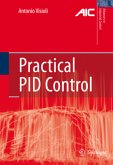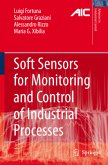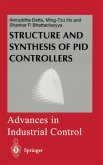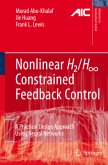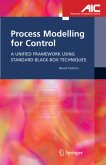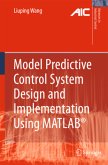Actuator saturation is probably the most frequent nonlinearity encountered in control applications and causes "controller" windup and "plant" windup calling for distinct remedies.
Peter Hippe presents antiwindup solutions for stable and unstable single-input-single-output and multiple-input-multiple-output (MIMO) systems. The solutions use only standard tools for the investigation of linear systems - state equations, transfer functions, etc. Less rigorous solutions which guarantee improved performance but without strict proof of stability are also demonstrated. Maintenance of MIMO system directionality and bumpless transfer are included and the developments in control methods are always supplemented by easily repeated numerical examples.
Academics doing control-related research and engineers working in the process industries will find this book an extremely useful overview of systematic windup prevention for all kinds of systems. It also has valuable insights tooffer the graduate student of control.
Peter Hippe presents antiwindup solutions for stable and unstable single-input-single-output and multiple-input-multiple-output (MIMO) systems. The solutions use only standard tools for the investigation of linear systems - state equations, transfer functions, etc. Less rigorous solutions which guarantee improved performance but without strict proof of stability are also demonstrated. Maintenance of MIMO system directionality and bumpless transfer are included and the developments in control methods are always supplemented by easily repeated numerical examples.
Academics doing control-related research and engineers working in the process industries will find this book an extremely useful overview of systematic windup prevention for all kinds of systems. It also has valuable insights tooffer the graduate student of control.
From the reviews: Peter Hippe has done a nice job with his book. The central thesis is clear and provides a nice framework for the methods he emphasizes. His book contains many helpful examples that demonstrate the approaches and make them easy to emulate. In addition, the selection of topics provides a sturdy bridge to other methodologies that address control with input saturation. For example, Hippe's dichotomy betwen controller windup and plant windup is related to the distinction between the effectiveness of "static" and "dynamic" anti-windup compensation which can be determined by assessing the feasibility of a set of LMIs. This provides a link to the growing body of work on the use of LMIs to solve control design problems in the presence of input saturation. Hippe's nonlinear trajectory generator may inspire the reader to consult other reference governor ideas in the literature, eventually leading to the vast body of work on model predictive control. Finally, the description of Buhler's nonlinear cascaded control idea may inspire the reader to digest papers on nested saturation control. Regardless of the saturation control problem one faces, Peter Hippe's book is an enjoyable read that will help to develop an intuitive feel for and better understanding of control with input saturation. IEEE Transactions on Automatic Control 53 (2008) 1976 - 1977 (Reviewer: Andrew R. Teel)


